RARE! 8th Air Force 100th Bomb Group ANTWERP - BELGIUM "BOMB BAY" Aerial Mission Raid Intelligence Photograph
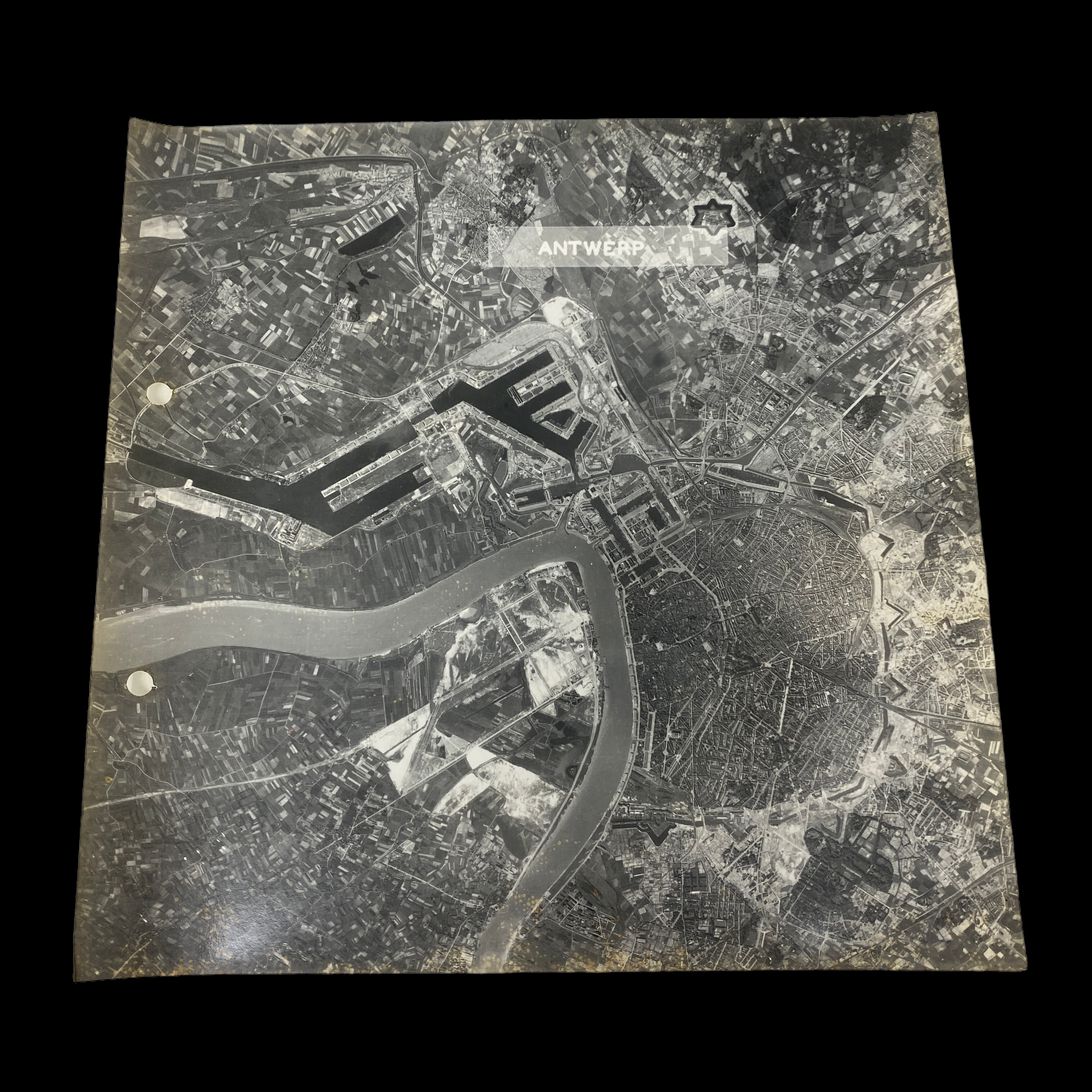

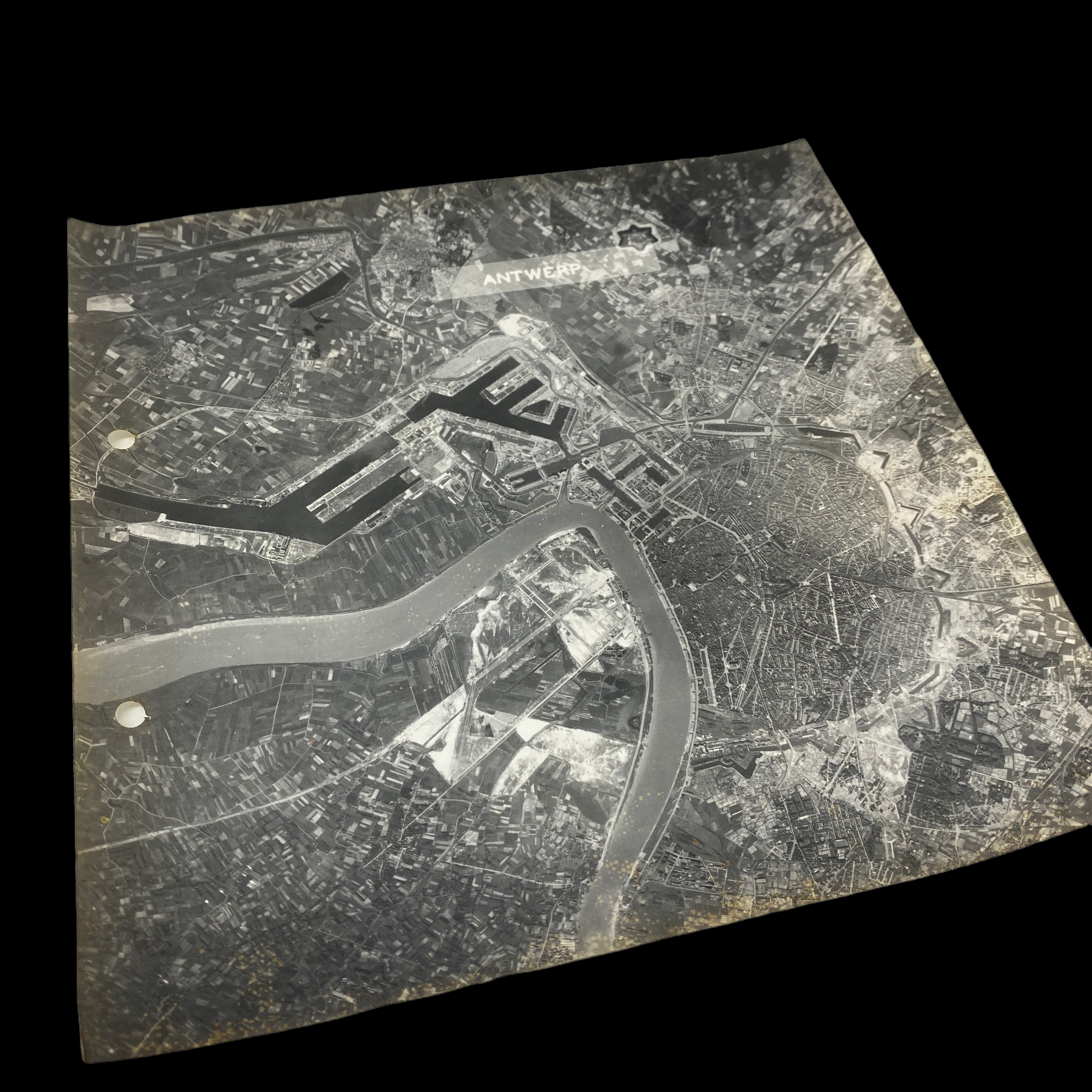
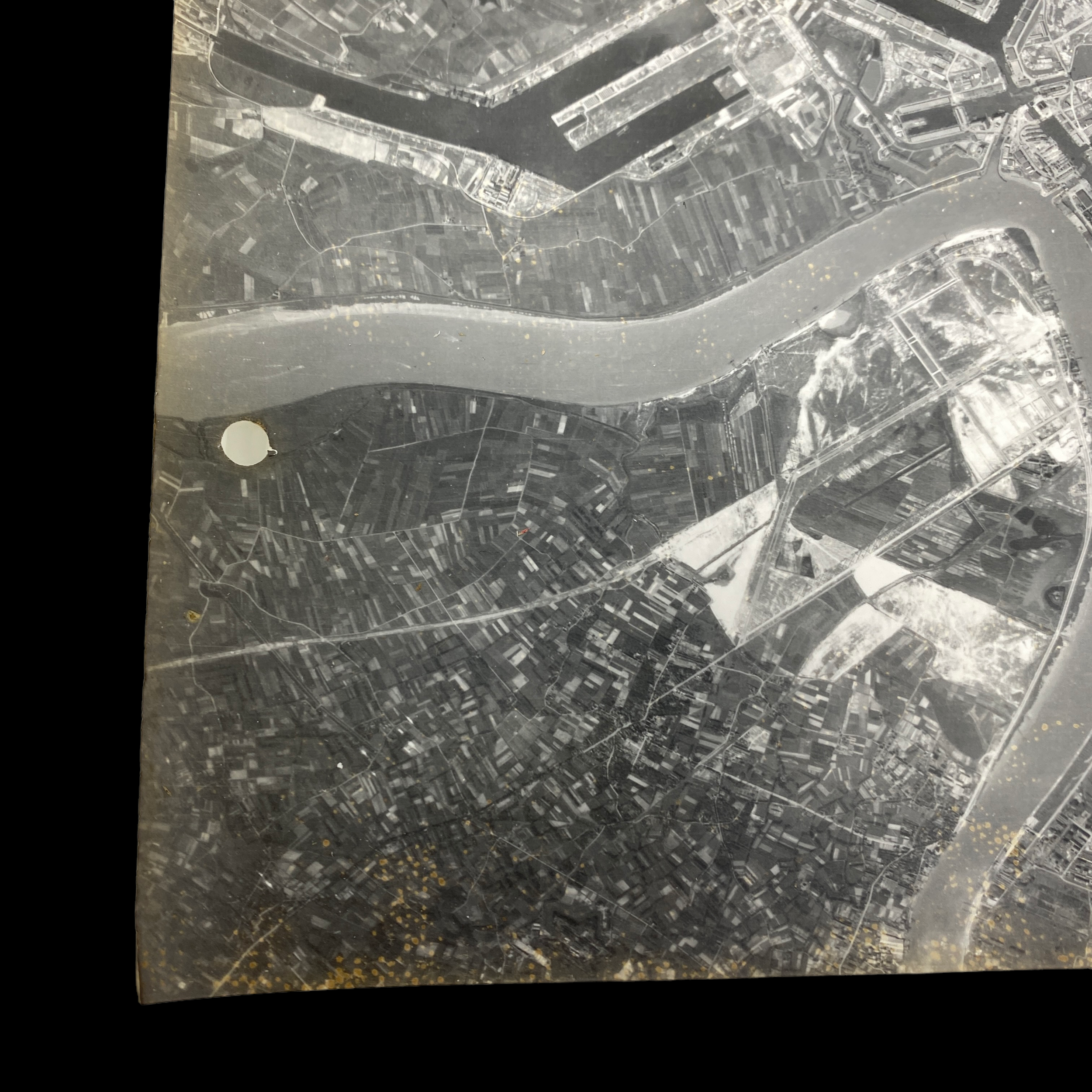
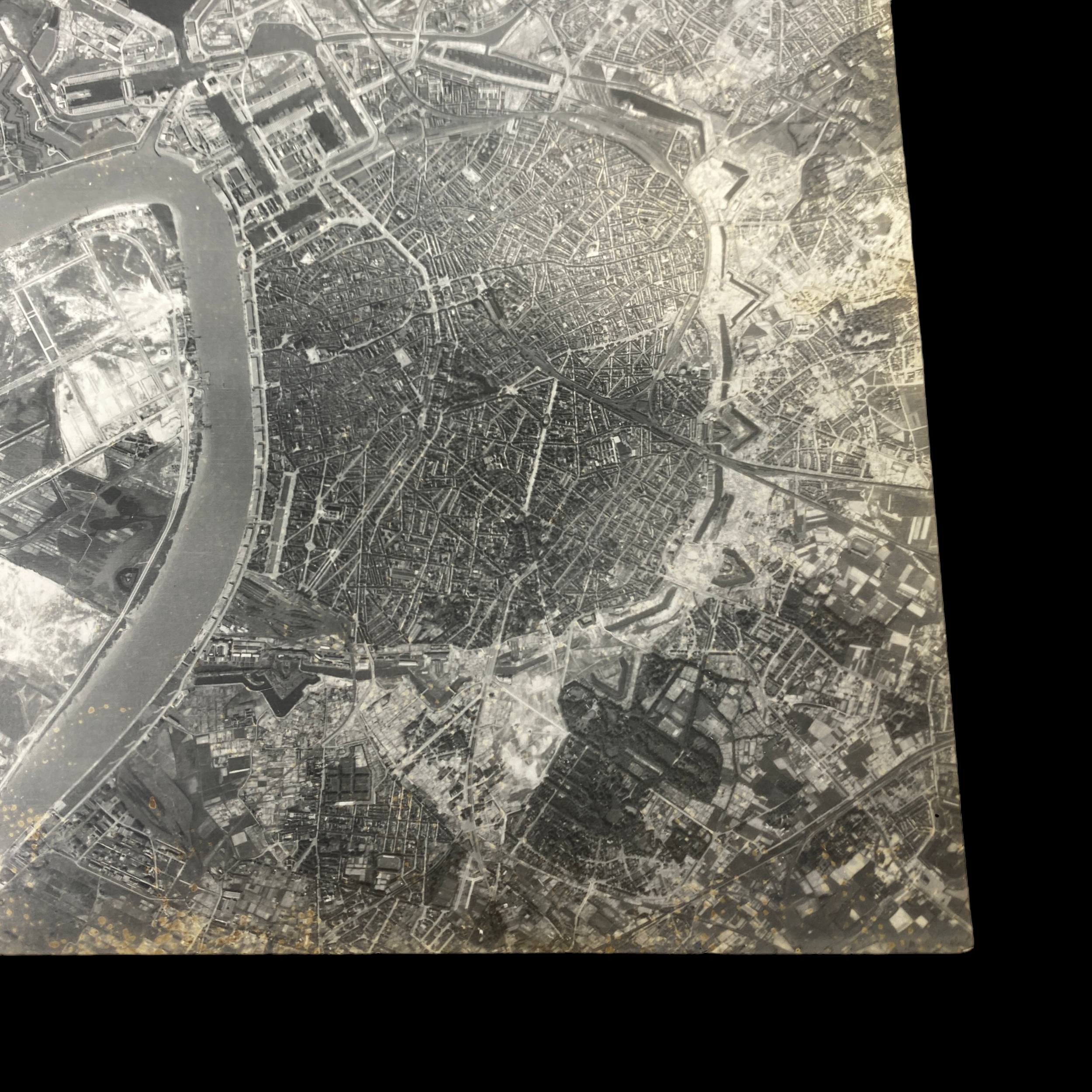
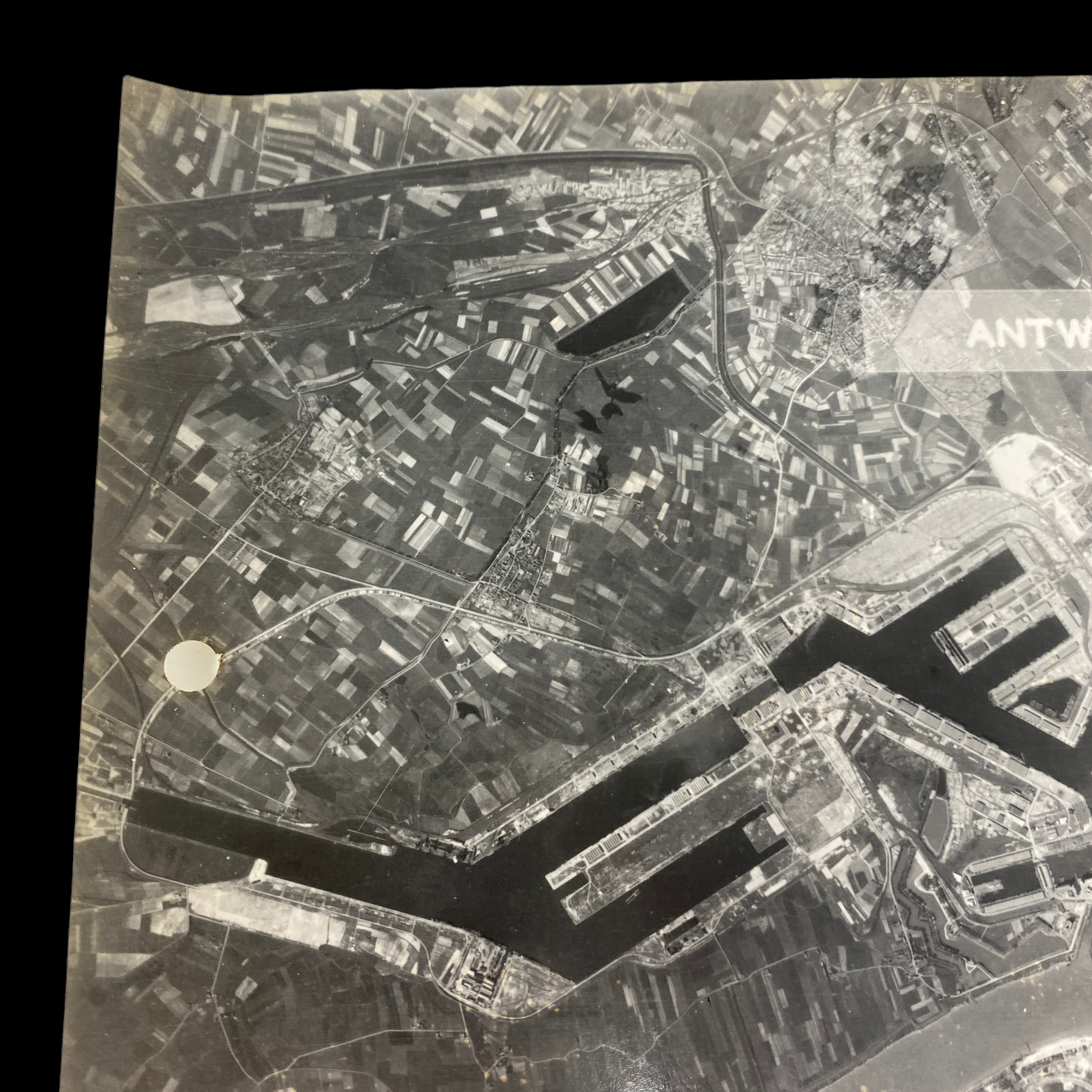
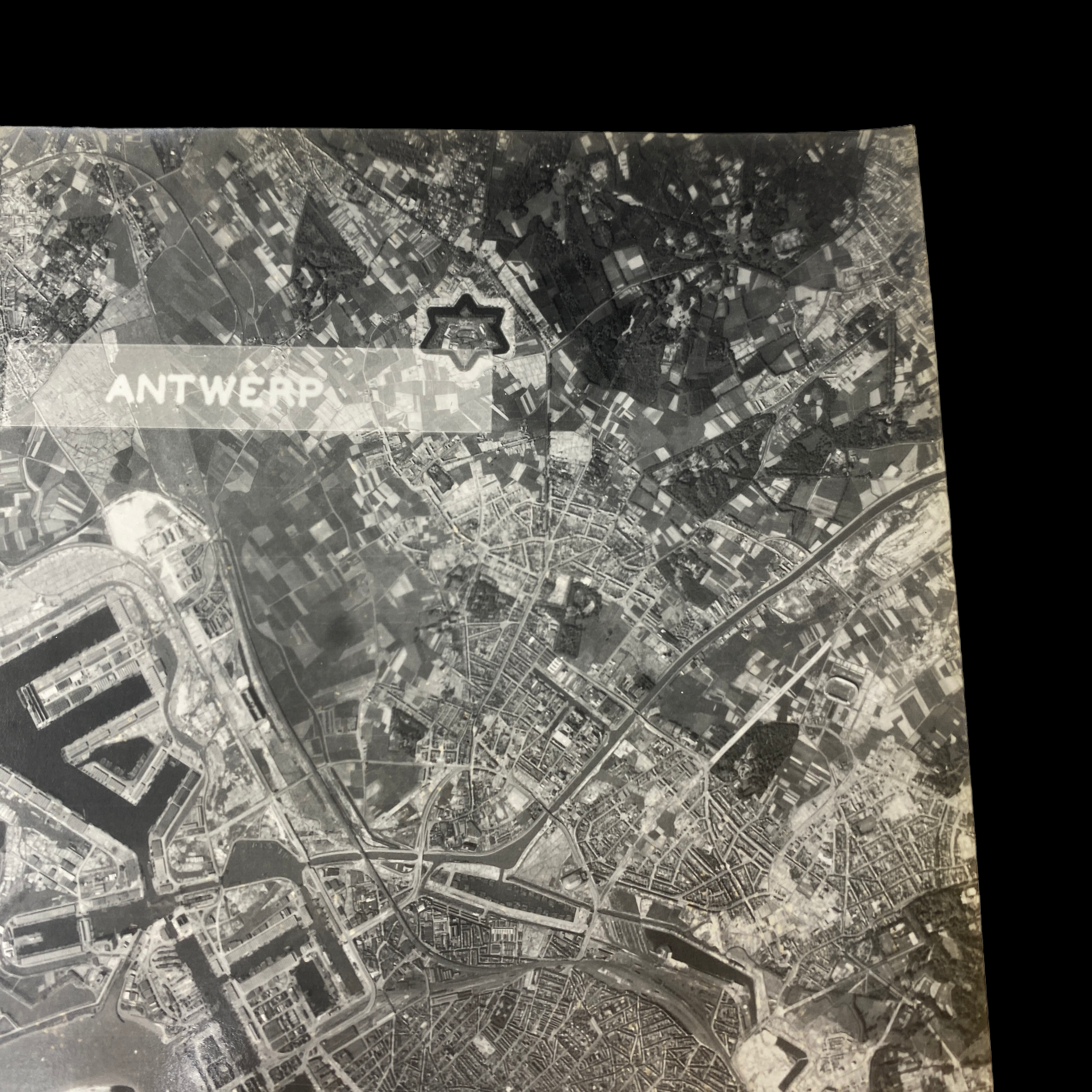
RARE! 8th Air Force 100th Bomb Group ANTWERP - BELGIUM "BOMB BAY" Aerial Mission Raid Intelligence Photograph
Comes with C.O.A.
RARE MUSEUM-GRADE BOMBING RUN AERIAL RAID MISSION PHOTOGRAPH FROM “BLOODY HUNDREDTH” 8TH AIR FORCE WWII NAVIGATOR VETERAN.
*This 8th Air Force 100th Bomb Group aerial mission photograph shows the Axis-occupied town of “ANTWERP - BELGIUM”. Because of the geographic realities of the air war over NW Europe in WWII Belgium became a focus and main hub of evasion line activity. The reason for this is that the flight paths of the allied air armadas took them over the airspace of either Holland or Belgium to reach the major cities of western and central Germany and in particular, the importance of the industrial basin of the Ruhr required these countries be travelled over. It is estimated that something in the order of 8,000 aircraft of all nations fell over Holland alone. These air penetrations resulted in many casualties due to the heavy concentration of German air defences on the coast and especially ‘Happy Valley’ as the concentration of industry, bordering on both Holland and Belgium was called. Since both Holland and Belgium proved to be very ‘Ally’ friendly, it was natural that the vast majority of evaders originated in these two countries. Due to the absence of appropriate targets prior to the build-up for D-Day, France was the focus of relatively few losses compared with Holland and Belgium. Nonetheless, it provided a share of evaders before D-Day, with most airmen coming down in the coastal areas, following raids on the ports and submarine pens that were the shallow targets of American raids in late 1942 and early 1943 when fighter escort simply wasn’t available to support deeper daylight raids into Germany. The casualty rate was as high as that of the bomber crew during the very worst period of the war. In other words, hardly anyone managed to get through a 'tour' without becoming a casualty. No 'Helper' could expect to operate, and history was to prove it, for more than six months. Many, very many did not last even half that long.
This incredibly rare and original WWII aerial bombing mission raid photograph was taken by the B-17 Flying Fortresses of the 8th Air Force. These "Bloody Hundredth" aerial raid photographs were taken during bombing raids of the 100th Bomb Group as well as other important German-occupied towns and cities. Even if that particular town was not apart of the mission’s bombing run, some of the 8th Air Force’s B-17s were tasked with also photographing these areas FLYING TO and FLYING BACK from their bombing runs.
These aerial photographs were developed and printed following a mission where they would be printed in theater and used for vital military intelligence. These aerial raid photos provided the 100th Bomb Group and the 8th Air Force with crucial photographic intelligence that could be used for updated air revision maps, FLAK map adjustments, as well as target identification for future aerial raids. Following the D-Day landing in Normandy aerial photographs like these were used to provide soldier on the ground with the most accurate maps of the German defences. These photographs were indispensable and were used in many different ways.
This incredibly rare aerial raid mission photograph shows exactly what the 100th Bomb Group B-17 pilots, navigators, and bombardiers saw on their missions. This is an incredible piece of World War II history!
This aerial bombing mission raid photograph was a bring back of a WWII navigator veteran who served extensively with the 100th Bomb Group (8th Air Force) during WWII. This 8th Air Force veteran brought back ALL of his bombing raid mission maps during his time serving from 1942 till VE-Day in 1945. This veterans collection has been requested to be pieced out to spread the legacy of the airmen of the 8th Air Force that sacrificed their lives for our freedom. A portion of this sale is also being donated to the non-profit Honor Flight Network. The mission of Honor Flight is to transport America’s veterans to Washington, D.C. to visit the memorials dedicated to honoring those who have served and sacrificed for our country.
The 100th Bomb Group was constituted as a heavy bomber group inside the Eighth Air Force, which, at peak strength on D-Day, June 6, 1944, fielded 40 groups of Boeing B-17s and Consolidated B-24s. The 351st Bomb Group flew strategic bombing missions from their base at Polebrook, Northamptonshire from April 1943 to June 1945.
The 100th Bomb Group also known as the "The Bloody Hundredth", because of its reputation for losing a high number of aircraft and crews.
Over the course of 22 months of aerial combat, the aircrews of the 100th had served a deadly apprenticeship as they honed their skills and tactics. In an unemotional analysis of the raw numbers, the Bloody 100th’s wartime losses were not the worst suffered by the Eighth Air Force, though they were in the top three of losses by heavy bomber groups. The official history from the 100th Bomb Group Foundation cites 184 missing aircrew reports on 306 missions. In his memoir An Eighth Air Force Combat Diary, 100th copilot John Clark pointed out that “50% of the Group’s losses occurred in only 3% of its missions.” Like a gambler whose luck has gone cold, when the crews of the 100th had a bad day, they had a very bad day.
More than 26,000 Eighth Air Force personnel sacrificed their lives in service to the war effort. The total number killed or missing in action was slightly more than that suffered by the U.S. Marine Corps, and a little less than half the losses sustained by the entire U.S. Navy. Comparisons such as these do nothing to diminish the contributions of other military branches, but rather point out the gargantuan scale of the Eighth Air Force’s effort. The 100th Bomb Group’s portion of those losses was 785 men killed outright or missing in action and 229 aircraft destroyed or rendered unsuitable for flight.
*Full Mission History of the 100th Bombardment Group (Heavy) during WWII:
Constituted as 100th Bombardment Group (Heavy) on 28 Jan 1942. Activated on 1 Jun 1942. Used B-17’s to prepare for duty overseas. Moved to England, May-Jun 1943, and was assigned to Eighth AF. Operated chiefly as a strategic bombardment organization until the war ended. From Jun 1943 to Jan 1944, concentrated its efforts against airfields in France and naval facilities and industries in France and Germany. Received a DUC for seriously disrupting German fighter plane production with an attack on an aircraft factory at Regensburg on 17 Aug 1943. Bombed airfields, industries, marshaling yards, and missile sites in Western Europe, Jan-May 1944. Operations in this period included participation in the Allied campaign against enemy aircraft factories during Big Week, 20-25 Feb 1944. Completed a series of attacks against Berlin in Mar 1944 and received a DUC for the missions. Beginning in the summer of 1944, oil installations became major targets. In addition to strategic operations, the group engaged in support and interdictory missions, hitting bridges and gun positions in support of the Normandy invasion in Jun 1944; bombing enemy positions at St Lo in Jul and at Brest in Aug and Sep; striking transportation and ground defenses in the drive against the Siegfried Line, Oct-Dec 1944; attacking marshaling yards, defended villages, and communications in the Ardennes sector during the Battle of the Bulge, Dec 1944- Jan 1945; and covering the airborne assault across the Rhine in Mar 1945. Received the French Croix de Guerre with Palm for attacking heavily defended installations in Germany and for dropping supplies to French Forces of the Interior, Jun-Dec 1944. Returned to the US in Dec 1945. inactivated on 21 Dec 1945.